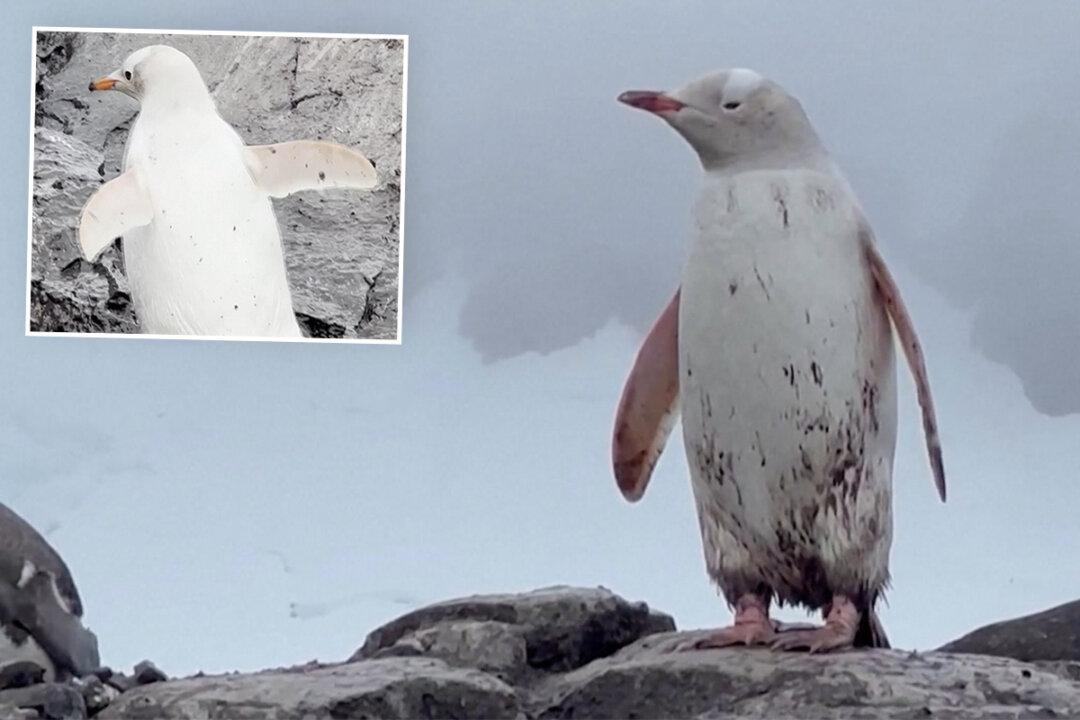Scientists working at a research base in Chilean Antarctica spotted one penguin sticking out from all the rest. With its rare all-white body, nearly devoid of color from head to toe, this type of bird is rarely found in the penguin world.
The female bird belongs to the “gentoo” species of penguin (Pygoscelis papua), set apart from other black-and-white penguins such as the emperor penguin (Aptenodytes forsteri) and the king penguin (Aptenodytes patagonicus) by the wide white stripe above its eyes.






